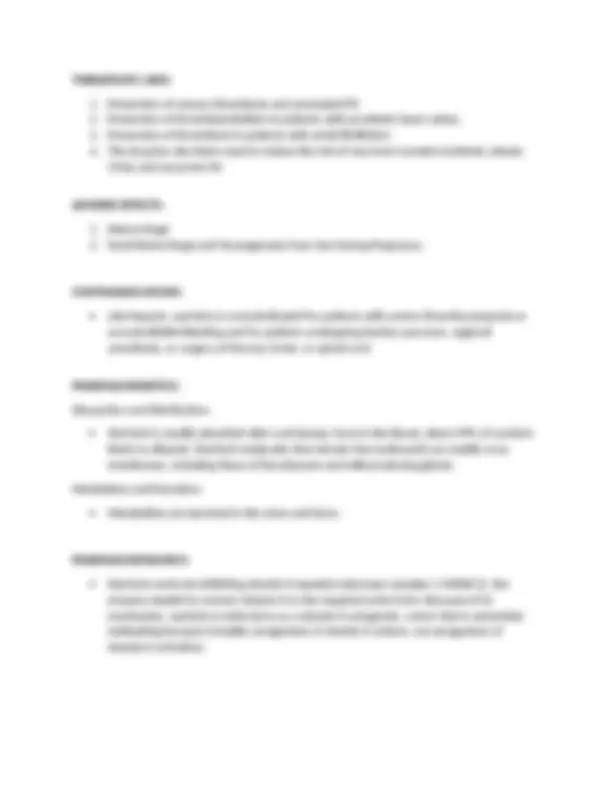



Study with the several resources on Docsity

Earn points by helping other students or get them with a premium plan


Prepare for your exams
Study with the several resources on Docsity

Earn points to download
Earn points by helping other students or get them with a premium plan
Community
Ask the community for help and clear up your study doubts
Discover the best universities in your country according to Docsity users
Free resources
Download our free guides on studying techniques, anxiety management strategies, and thesis advice from Docsity tutors
The content was all about anticoagulant drugs
Typology: Summaries
1 / 3

This page cannot be seen from the preview
Don't miss anything!


By definition, anticoagulants are used to inhibit clot formation. are administered orally or parenterally, both subcutaneously and by the intravenous (IV) route.
Heparin is a rapid-acting anticoagulant administered only by injection. Heparin differs from warfarin (an oral anticoagulant) in several respects, including mechanism, time course, indications, and management of overdose. SubQ: Onset: 20-30 minutes Peak: UK Duration: UK IV: Onset: Immediate Peak: 5-10 minutes Duration: 2-6 hours Antidote: Protamine Sulfate THERAPEUTIC USES:
Heparin is contraindicated for patients with thrombocytopenia and uncontrollable bleeding. In addition, heparin should be avoided both during and immediately after surgery of the eye, brain, or spinal cord. Lumbar puncture and regional anesthesia are additional contraindications. PHARMACOKINETICS: Absorption and Distribution: Heparin cannot be absorbed if given orally and therefore must be given by injection (IV or subQ). Metabolism and Excretion: Heparin undergoes hepatic metabolism by heparinase and excreted in urine. PHARMACODYNAMICS: Heparin, administered for acute thromboembolic disorders, prevents thrombus formation and embolism. It has been effectively used to treat DIC, which causes multiple thrombi in small blood vessels. Monitor for bleeding:
Warfarin is an oral anticoagulant that is synthesized from dicumarol. PO: Onset: 24-72 hours Peak: 36-72 hours, 5-7 days full effect Duration: 2-5 days Antidote: Vitamin K